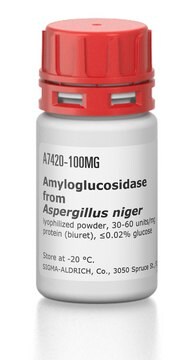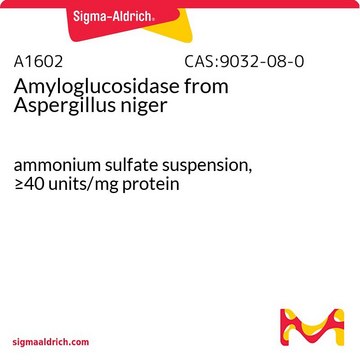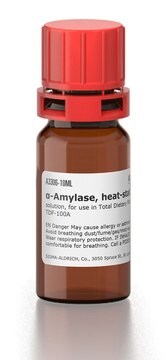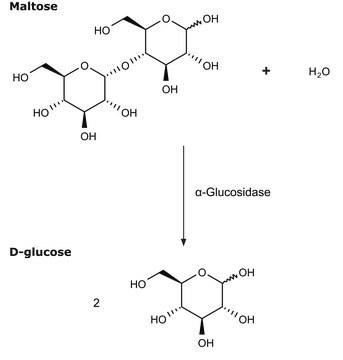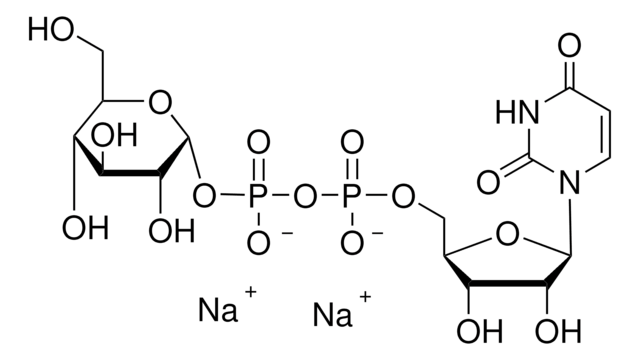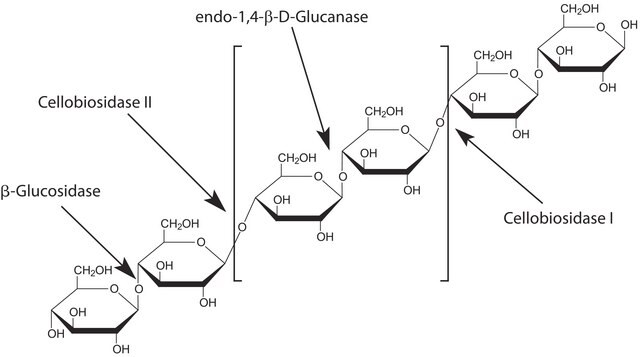A9228
Amyloglucosidase from Rhizopus sp.
≥40,000 units/g solid
Sinónimos:
1,4-α-D-Glucan glucohydrolase, Exo-1,4-α-glucosidase, Glucoamylase
About This Item
Productos recomendados
formulario
lyophilized solid
Nivel de calidad
actividad específica
≥40,000 units/g solid
solubilidad
0.03 M sodium citrate-phosphate buffer, pH 4.5: soluble 5.0 mg/mL
temp. de almacenamiento
−20°C
¿Está buscando productos similares? Visita Guía de comparación de productos
Categorías relacionadas
Aplicación
Acciones bioquímicas o fisiológicas
Definición de unidad
Forma física
Palabra de señalización
Danger
Frases de peligro
Consejos de prudencia
Clasificaciones de peligro
Resp. Sens. 1
Código de clase de almacenamiento
11 - Combustible Solids
Clase de riesgo para el agua (WGK)
WGK 3
Punto de inflamabilidad (°F)
Not applicable
Punto de inflamabilidad (°C)
Not applicable
Equipo de protección personal
Eyeshields, Gloves, type N95 (US)
Certificados de análisis (COA)
Busque Certificados de análisis (COA) introduciendo el número de lote del producto. Los números de lote se encuentran en la etiqueta del producto después de las palabras «Lot» o «Batch»
¿Ya tiene este producto?
Encuentre la documentación para los productos que ha comprado recientemente en la Biblioteca de documentos.
Los clientes también vieron
Protocolos
This procedure may be used for the determination of Amyloglucosidase activity using starch as the substrate.
Nuestro equipo de científicos tiene experiencia en todas las áreas de investigación: Ciencias de la vida, Ciencia de los materiales, Síntesis química, Cromatografía, Analítica y muchas otras.
Póngase en contacto con el Servicio técnico